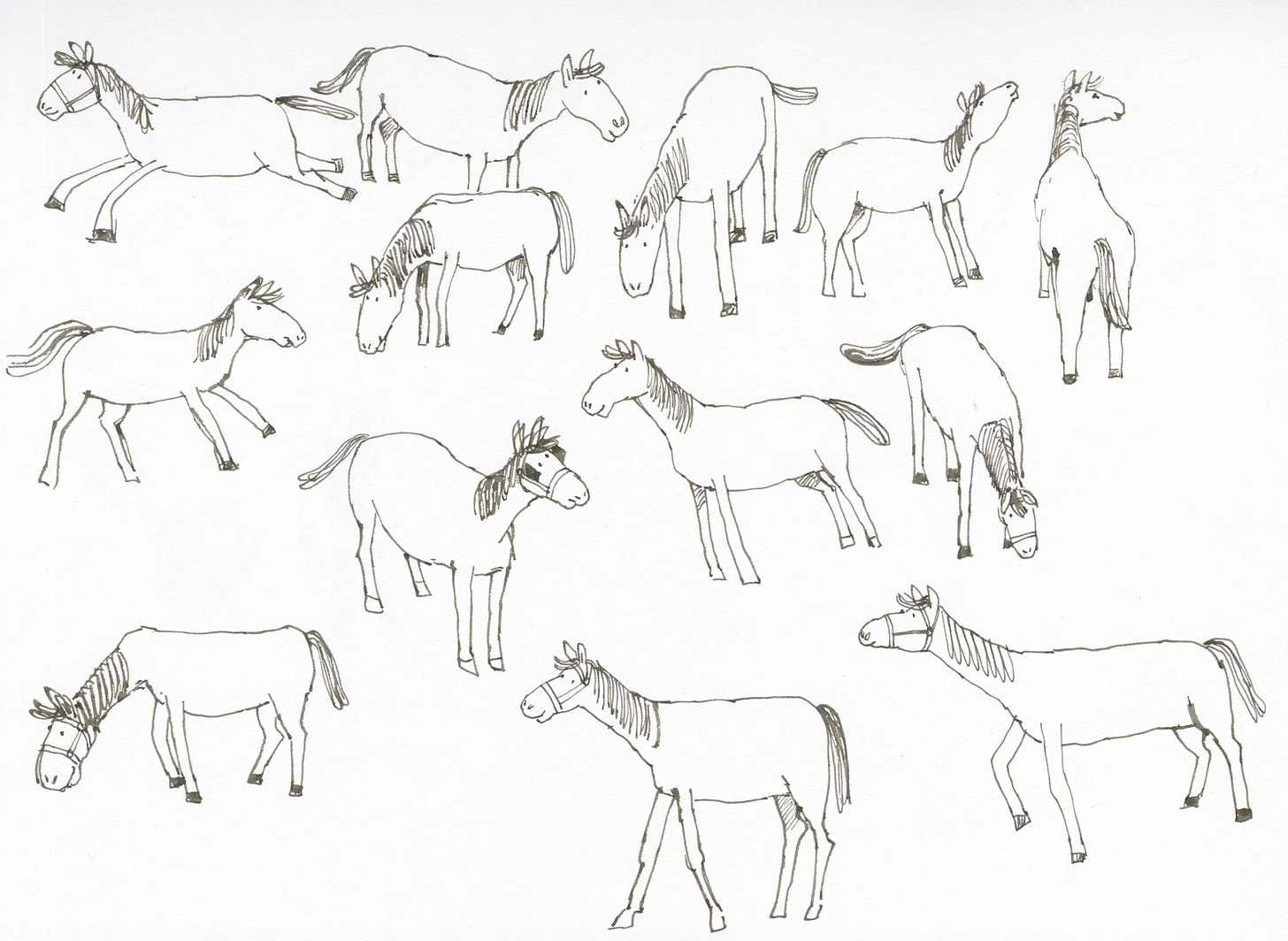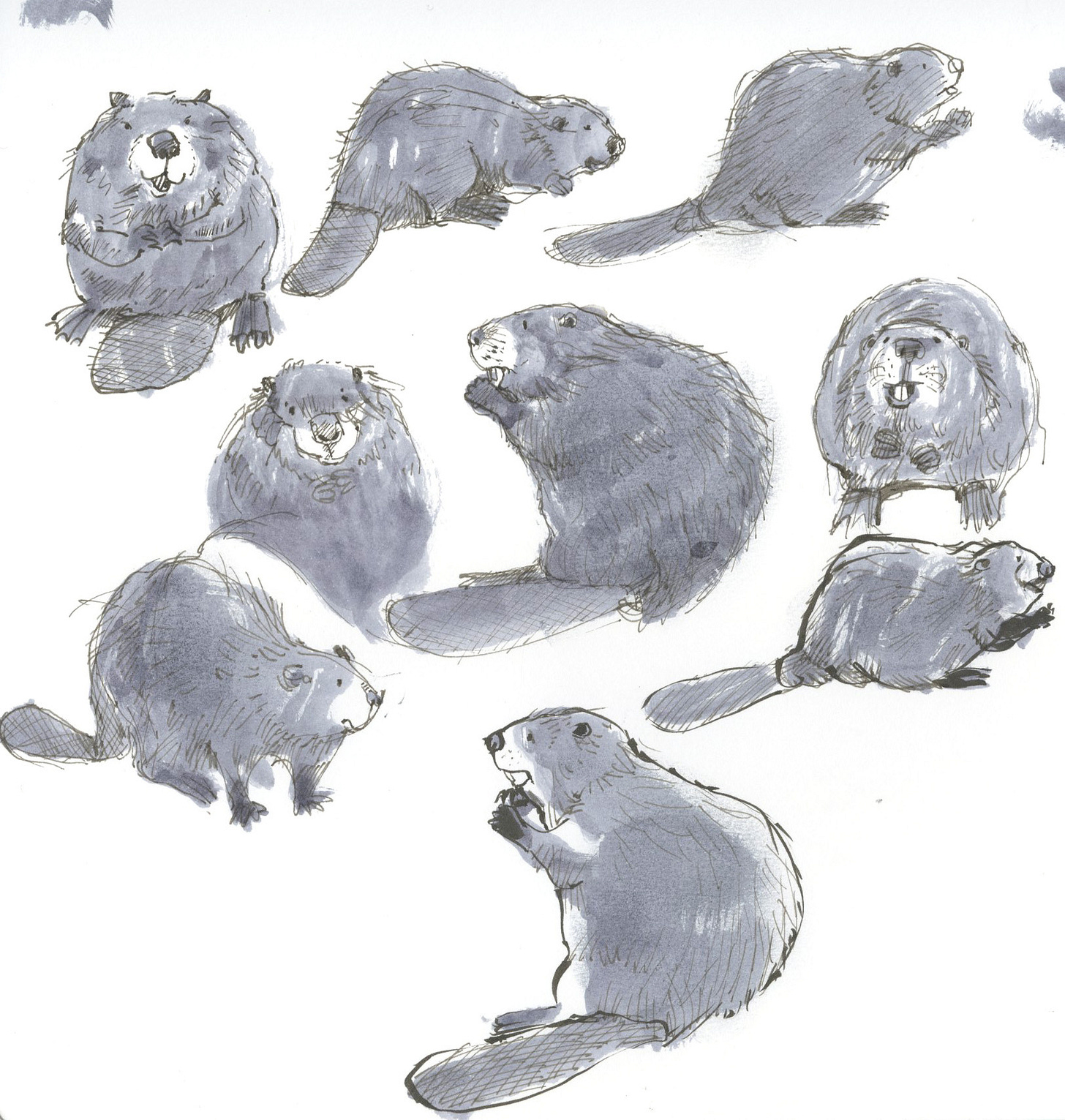Illustrating a children’s book is a looong project. Whether it’s for a self-written manuscript or someone else’s, it’s months in the making. Hours are spent putting together ideas for the world where characters tell a story. An illustrator’s goal is to create compositions that entertain, surprise and delight, but also all work together visually toward making the very best possible story. We want memorable characters who pull you through from page to page, emotions and all.
I have started doing a lot more sketching before I even sit down to start setting up the spreads. Doing these with an ink pen keeps me from getting fussy. Who are my characters? I want faces to be consistent and body language, expressions etc., to reflect specific personalities. And if I am drawing a horse, I want its likeness to be at my fingertips. (Gaaah! horses are f-ing hard to draw!)
What makes a beaver, look like a beaver? If I am going for something more stylized, what is the essence of that animal. 40 sketches later I might have an idea. And I may possibly need a break from drawing rodents.
The most frustrating thing for me and maybe for most visual makers has got to be when I find I have overworked a picture. Knowing my subject inside and out, having it right there as muscle memory, means I don’t have to think about accuracy. I can keep it loose – “loose as a goose.” (Apparently… and I looked this up, this expression probably comes from the fact that geese have loose bowels. Eew!)
Once I start sketching a spread and before I start turning all fussy and self-judgmental, it helps me to slow down and spend time thinking about what is working in a composition, and what isn’t. It’s problem-solving. And hand-wringing, brainstorming, head- banging, stepping away, coffee, chocolate, music, and walks. Finishes? Same routine. Maybe more head-banging. Definitely more chocolate.
So, there you have it. Know your characters. Take some time. How to stay loose as a goose. Wasn’t that refreshing?







Exactly how I work too and feel at times!